19 Mar Visiting Mana Village near Badrinath, Uttarakhand
A slight detour from Badrinath will take you to Mana village near the border of Tibet. This place is not just beautiful but is filled with legends of gods that will not know or find anywhere else. But most surprising of all is that I found the river Saraswati here, a river that people believe to be extinct. It is real, it is tangible but it does vanish on the way. Is it magic?
Because of such stories, the place takes such significance in Hinduism and mythology, I was surprised about how unknown it is. But then again, it is best to keep the tourist crowd low for the mountains are best left alone.
If you are travelling all the way to Badrinath or Auli and are interested in exploring something offbeat and holy, plan a day trip to Mana Village. It is easy to reach. I will try and put down all I can from my experience here to help you with your travel plans.
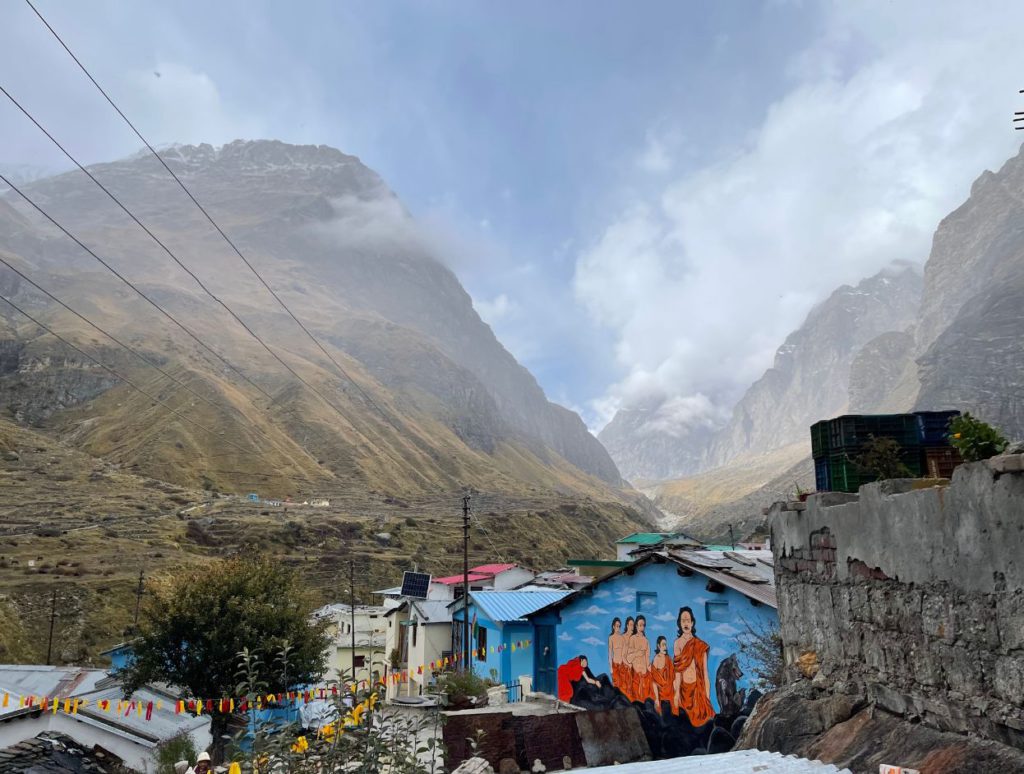
Where is Mana Village Located
Mana village is located just 4km north of Badrinath town. While there are motorable roads ahead towards the border, it is the last village located before the Tibet border (that is 26km away) where civilians are allowed. It will take you around 3-4 hours to tour and explore the important spots in the village.
The village is located at an altitude of 3,200 meters (approx 10,500 ft) which is enough to get you breathless after climbing a few steps due to limited oxygen. It also gets pretty cold. So limit your movements as per your health conditions.
Visiting Mana? Consider visiting Auli and Read more about it on our blog
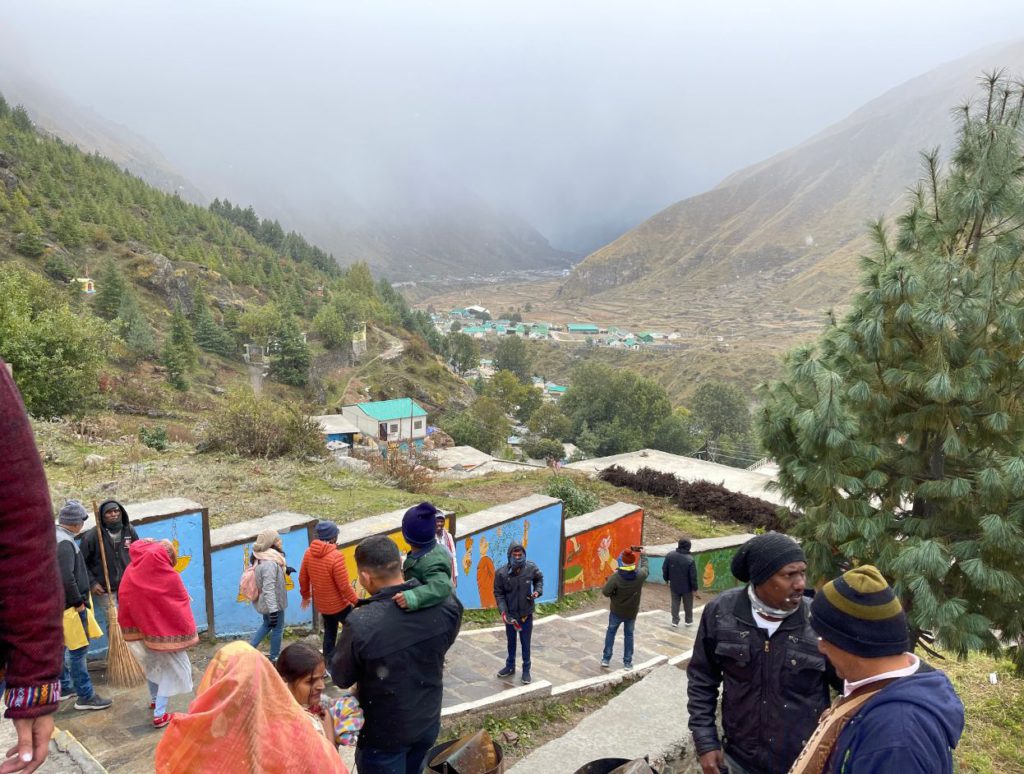
Significance of Mana Village
I am text block. Click edit button to change this text. Lorem ipsum dolor sit amet, consectetur adipiscing elit. Ut elit tellus, luctus nec ullamcorper mattis, pulvinar dapibus leo.
Mana village holds traces of several stories from Hindu mythology. There are several events on different timelines that took place here. It was here that Veda Vyas narrated the scripture of Mahabharata to Lord Ganesha who wrote it down in their respective caves. You can visit their abodes now known as Vyas Gufa and Ganesha Gufa.
The other important legend tells the last journey of Pandavas and Draupadi looking for a way to heaven. They eventually embarked on their last pilgrimage that starts here called ‘Swargarohini’ or the ‘Way to Heaven’. A marble gate shows the starting point. I was very curious to know where it goes. As it turns out the trail goes on for miles through lakes, and dense jungles and ends at Swargarohini peak.
Additionally, Mana village is the origin and disappearing point of river Saraswati. That in itself is strange and sounds unbelievable. But see it all for yourself. Vasudhara falls, located 5km ahead of Mana Village is also of religious importance.
Talking about the people, Mana village is home to tribal people from Mongolia who moved to these lands a few generations ago. They are the last generation of the Bhotia community. However, today they have adopted the Indian way of life, language and beliefs.
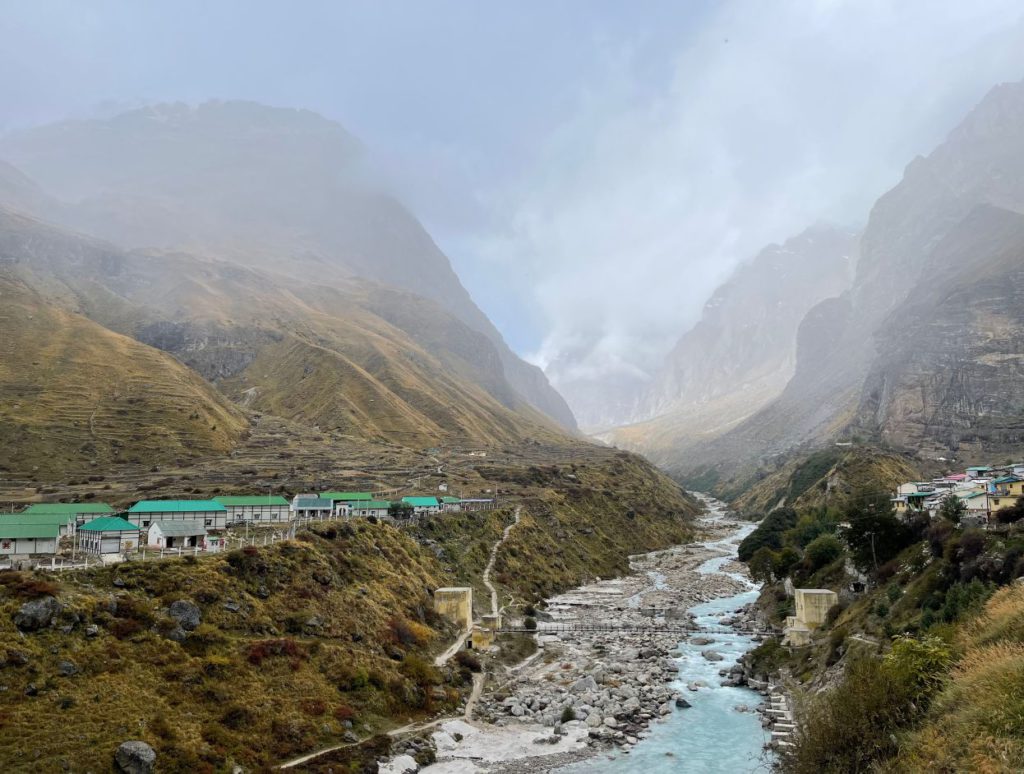
How to reach Mana Village from Badrinath
You can reach Mana village only by roadways via the road that connects Badrinath. This is the single and only route to the village. I am assuming that you have already reached Badrinath or have figured out transportation till that point. If not, you can check out our blog on travelling to Badrinath for more details. So we will only be talking about how to travel onwards.
There is no public transportation that runs to the village. You can rent a private taxi from Badrinath if you already don’t have one to reach the village. Unless it is not too crowded, it takes about 10-15 minutes to reach Mana. The vehicle cannot go all the way inside the village, so you will have to walk around 5-7 minutes from the parking area to the start of the village.
Some shared sumos may also run on this route for the locals but you will need to check that locally in Badrinath. Head to the local bus/stand or the parking area and ask around. You may be able to hitchhike.
If you are in the mood for some physical activity, you can also walk to the village. It will take you upto an hour to reach. There are no hotels available in the village. So unless you are planning to stay with a local family, this will be a day trip.
Places to see in Mana Village
1. Ganesh Temple and Cave
I am text block. Click edit button to change this text. Lorem ipsum dolor sit amet, consectetur adipiscing elit. Ut elit tellus, luctus nec ullamcorper mattis, pulvinar dapibus leo.
As you will walk inside the village, the first spot to stop at is Ganesha Temple and cave. While the temple is dedicated to Lord Ganesh, the cave is where he resided and wrote the Mahabharata narrated by Ved Vyasa.
As per Hindu legend, Ved Vyasa asked Lord Ganesha to pen down the story of Mahabharata as he thought he was the perfect person to do so. However, Lord Ganesha had a condition. He told Ved Vyasa that once he starts writing, his pen should not stop in between. Only then he will agree to do it.
Ved Vyasa agreed to it but he also put his condition forward. He said that Lord Ganesh should not just write what is narrated but should also understand the meaning and interpretation behind the words before he pens down the narrated words. Lord Ganesha also agreed to it and that is how Mahabharata was written.
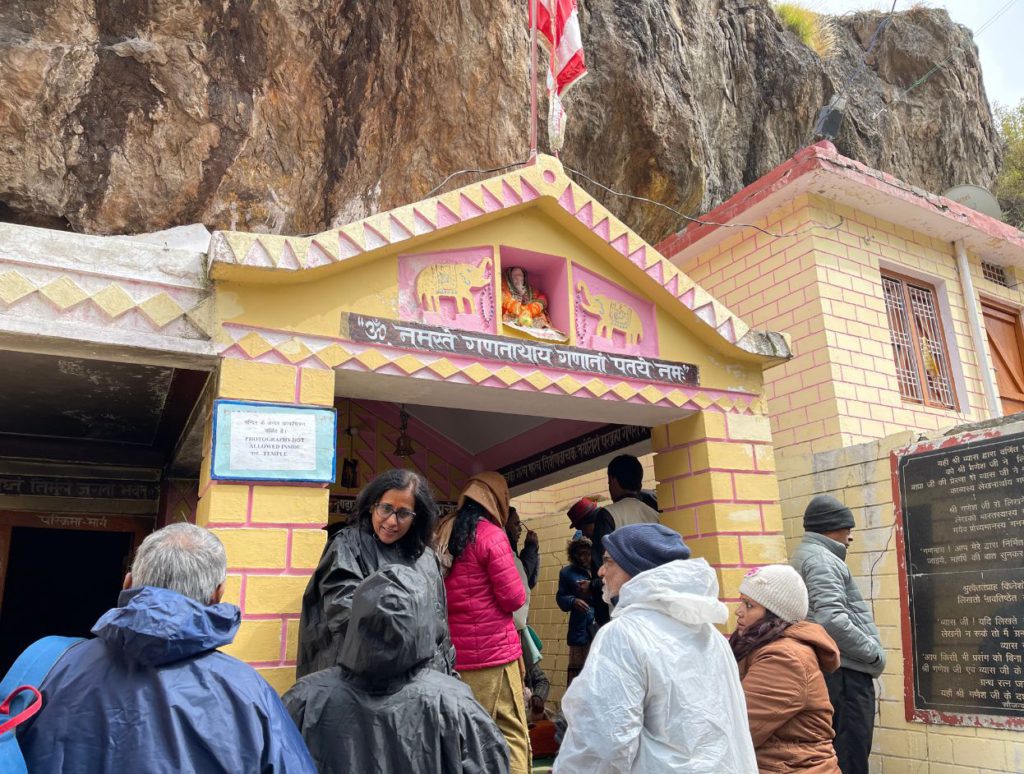
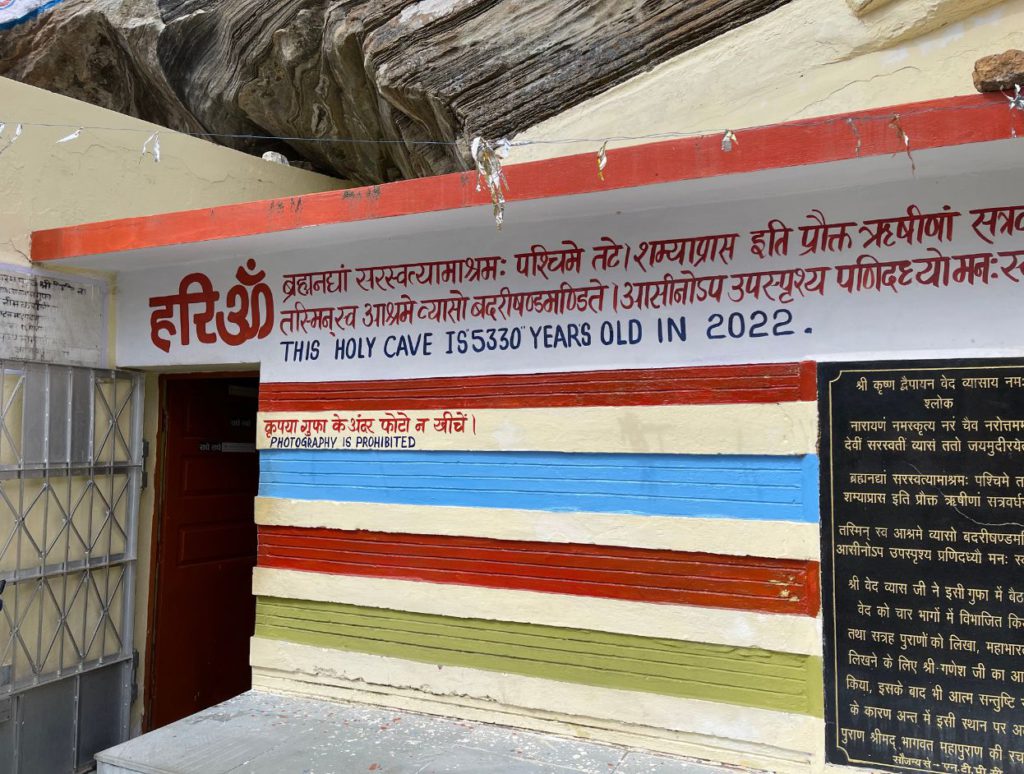
2. Ved Vyasa Cave
Climbing a few hundred steps, you will come across the next stop that is Ved Vyasa Cave. As per the legend this is where Ved Vyasa sat and narrated the Mahabharata where Lord Ganesha listened and wrote it in his cave.
Now it would sound strange to us how two people sitting so far apart can talk to each other. But remember, this was several thousand years ago, and we are not even sure that these were humans that we are talking about. So I won’t fret over finding logic in our limited understanding of the divine past.
As you will go inside the cave, you can sit down and a priest will also talk about the same tale in detail. If you have any questions, feel free to ask.
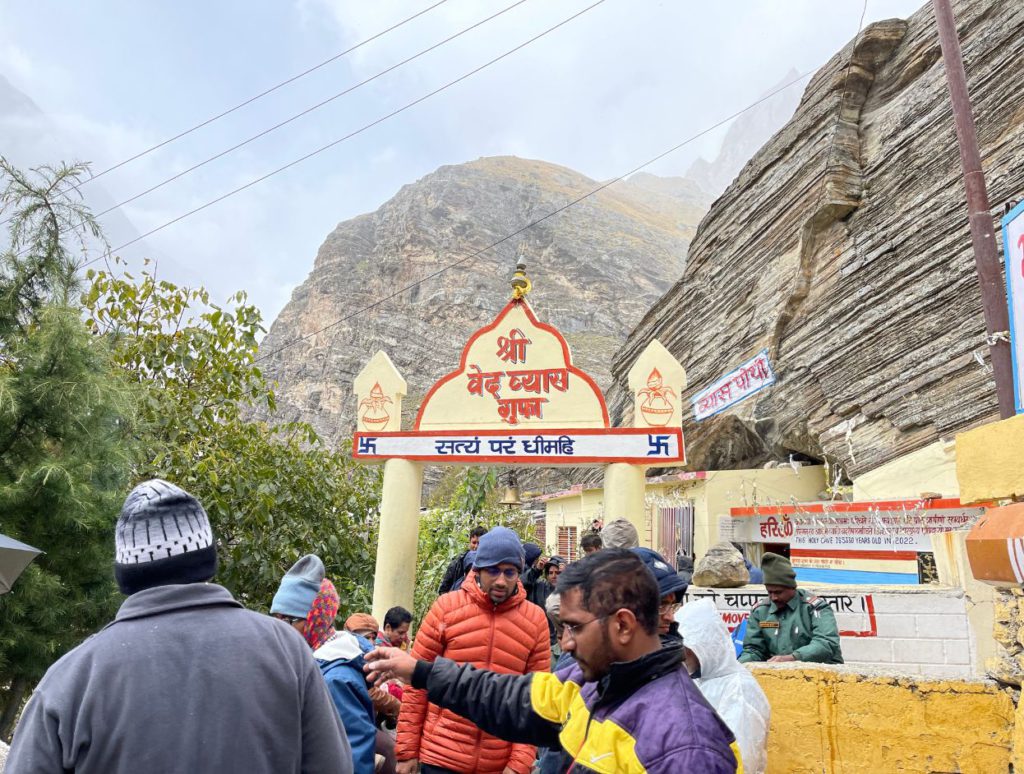
3. Origin of Saraswati River
I couldn’t believe my eyes. All my life, I have heard about this extinct river, especially when talking about the Sangam of three rivers at Prayagraj. But I did not know that it actually existed in real life. Just follow the sign boards in the village to reach and see it for yourself.
Interestingly, a tale surrounds this as well. Legends say that when Lord Ganesha was writing the Mahabharata in his cave, the sound from the Saraswati river was so loud that it distracted him a lot. He asked the river to be quiet (or to the river goddess) to which she did not agree. Lord Ganesh got angry and cursed the river to disappear altogether.
And surprisingly, if you follow the river, you can feel the water disappearing just a few hundred meters from its source. As the Saraswati river meets the Alaknanda a little ahead of Mana, the volume does not increase and all you can see is the tributary of Alaknanda taking over.
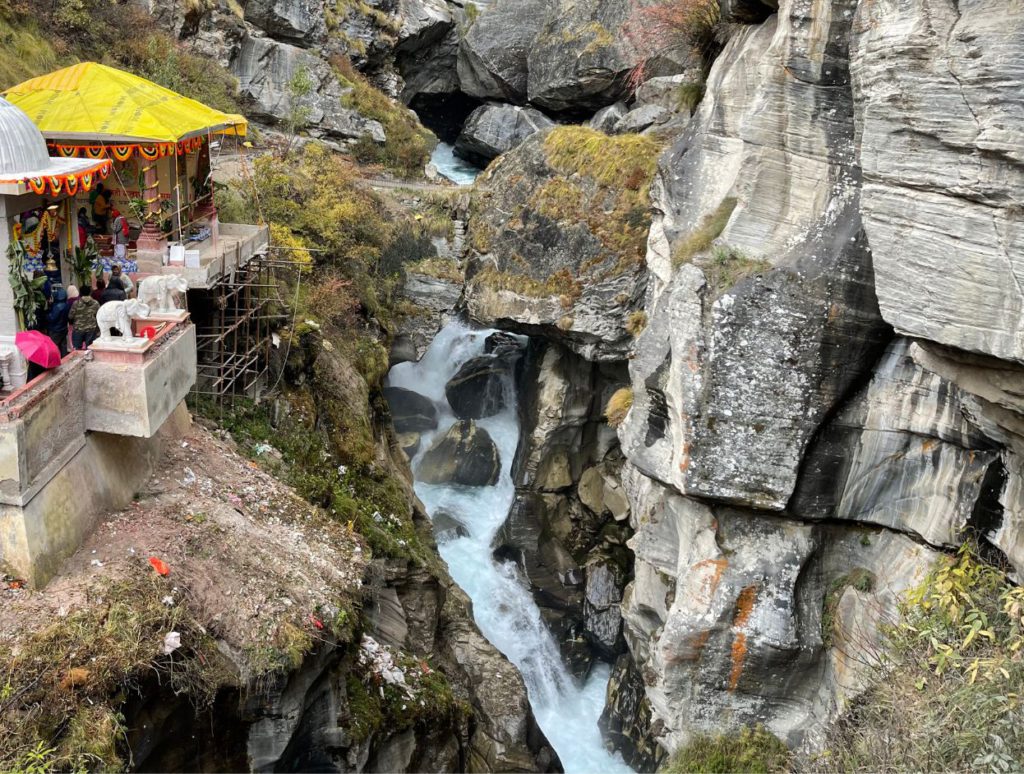
4. Saraswati Temple
Right next to the Saraswati river is a newly built Saraswati temple in pristine white marble that you must visit. It was the first day of its opening when I was there, so I did get lucky. While there may not be a historical significance to it, it still is lovely to visit.
The interior is dedicated to Goddess Saraswati in the middle, Lord Badri Vishal and Laxmi on the left, Shiva on the right and Hanuman. You can also buy small bottles of Saraswati water to take home, a pious Hindu practice during pujas.
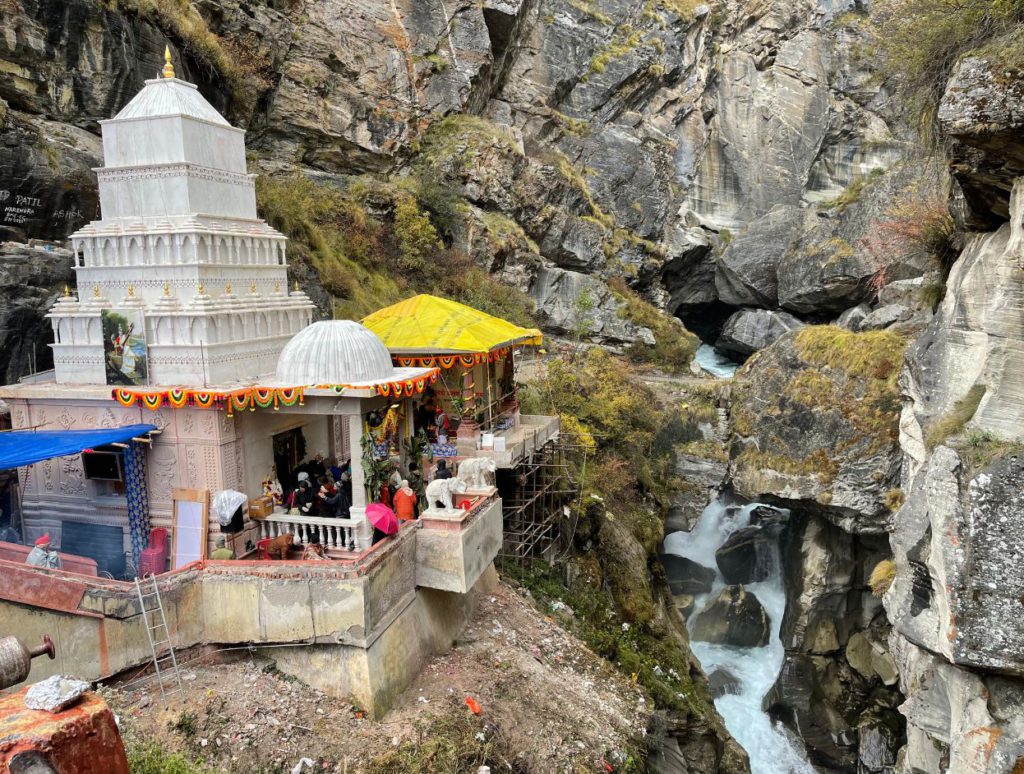
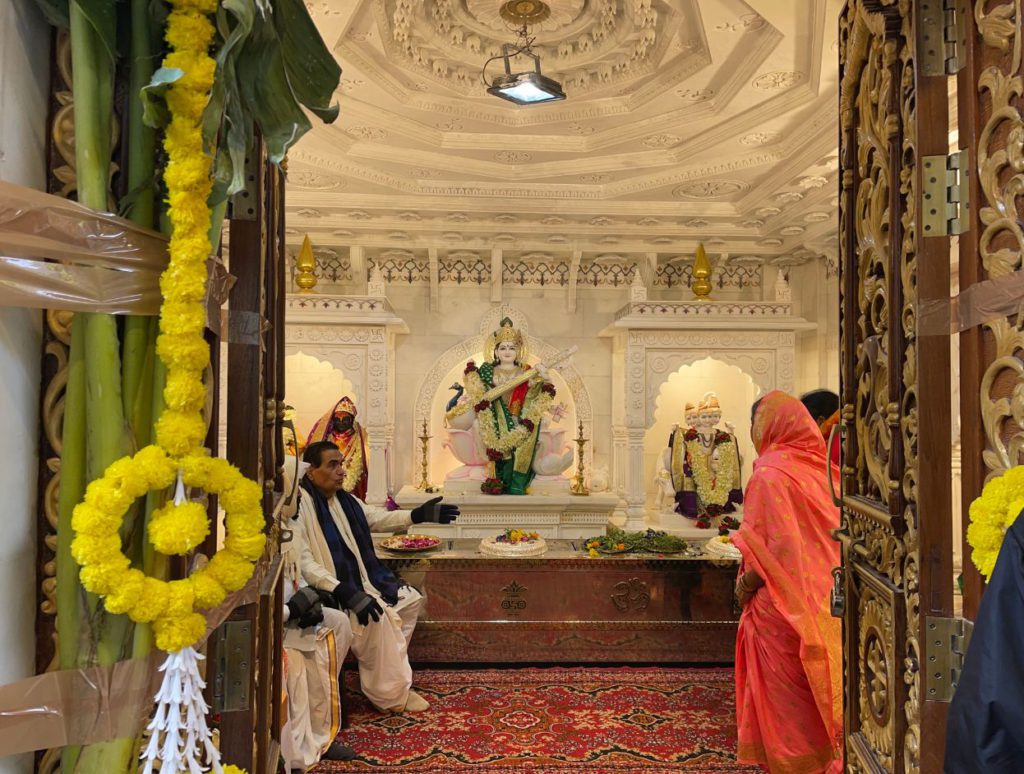
5. Bhima Pul
On the other side of the temple is Bhima Pul (or bridge) which is actually a huge rock over the Saraswati river. According to the legend, the Pandavas arrived in this village to start their last pilgrimage towards heaven. To do so, they needed to cross the river.
So they asked the goddess Saraswati to give them the way. When she did not provide one, Bhima used his strength to push a rock over the river so that Draupadi can cross the river to the other side. And that big rock over the river makes the Bhim pul.
6. Swargarohini Marg
To continue our story from above, the Pandavas along with Draupadi crossed the river and started their last pilgrimage towards Swargarohini Peak for the heavenly abode from Mana Village.
Today, you will find a nice marble entrance at this point that indicates the starting point of this trek. Over the course of this journey, all the Pandavas except Yudisthir passed away. Yudisthir was able to reach the Satopanth Lake which is present even today. From here he was offered a golden chariot to go to the heavens in his human body form.
There is a conflict on the location of Swargarohini peak since today they are located towards the west Garhwal region. However, due to the long timelines, this could also be given to the geographic changes that happened in the region during the course of time.
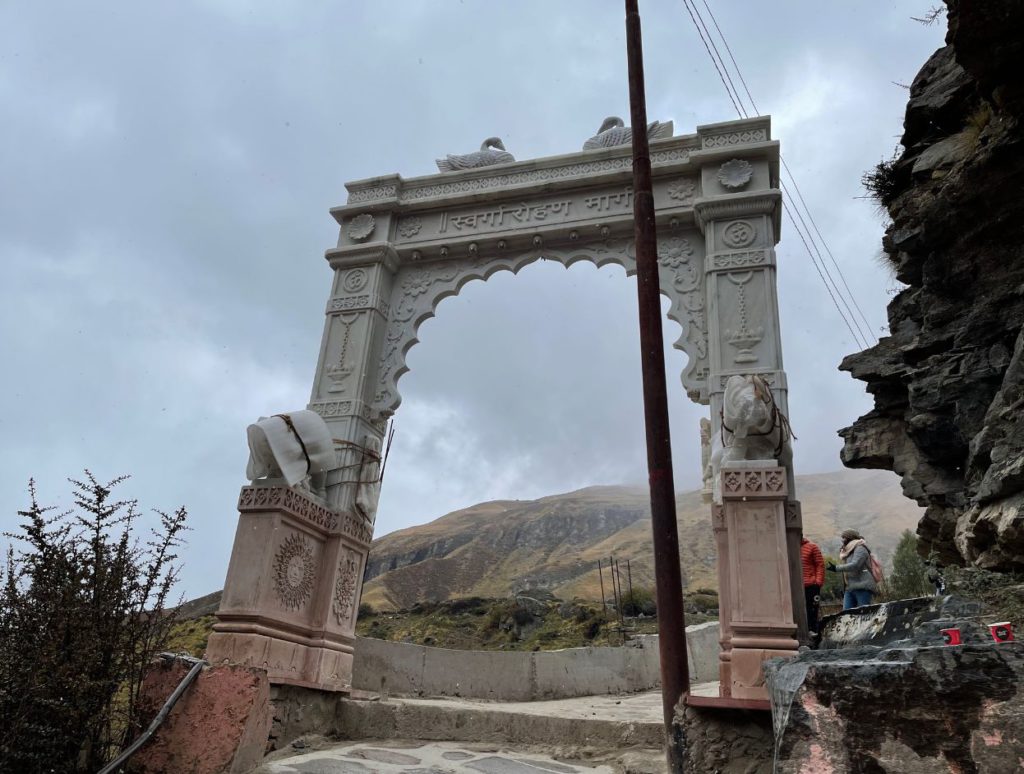
7. Vasudhara Falls
Vasudhara falls is around 5km from Mana village and you need to do a hard trek to reach this place which takes around 3-4 hours both ways. I will recommend you take a local guide since you will need help navigating the area and the cellular reception can go off at times.
Vasudhara falls are also considered pious. People believe that one can attain salvation from their sins by standing under the water. The water touches only people of virtuous souls and if you stand under it, you are entitled to salvation. The water is also said to taste like nectar since it absorbs the benefits of several ayurvedic herbs it passes through.
Vasudhara falls is also sacred since this is where Veda Vyasa divided the Vedas into four parts – Rig, Yajur, Sama and Atharva. Sahadeva, one of the Pandavas also gave up his life near Vasudhara falls during his last journey.
8. Last Tea Stall of India
Shining with the bold bright letters on the signage, Mana village ends with the last tea stall in India before the Tibet border. You need to climb higher to reach here which also gives a great aerial view of the Mana village.
You can enjoy a cup of milk tea, green tea with Maggi and snacks here. The place is simple but comfortable and the view is enjoyable. We were lucky to catch a snowfall here and hunted the snowflakes that evaded us all together. No legends about this place though!
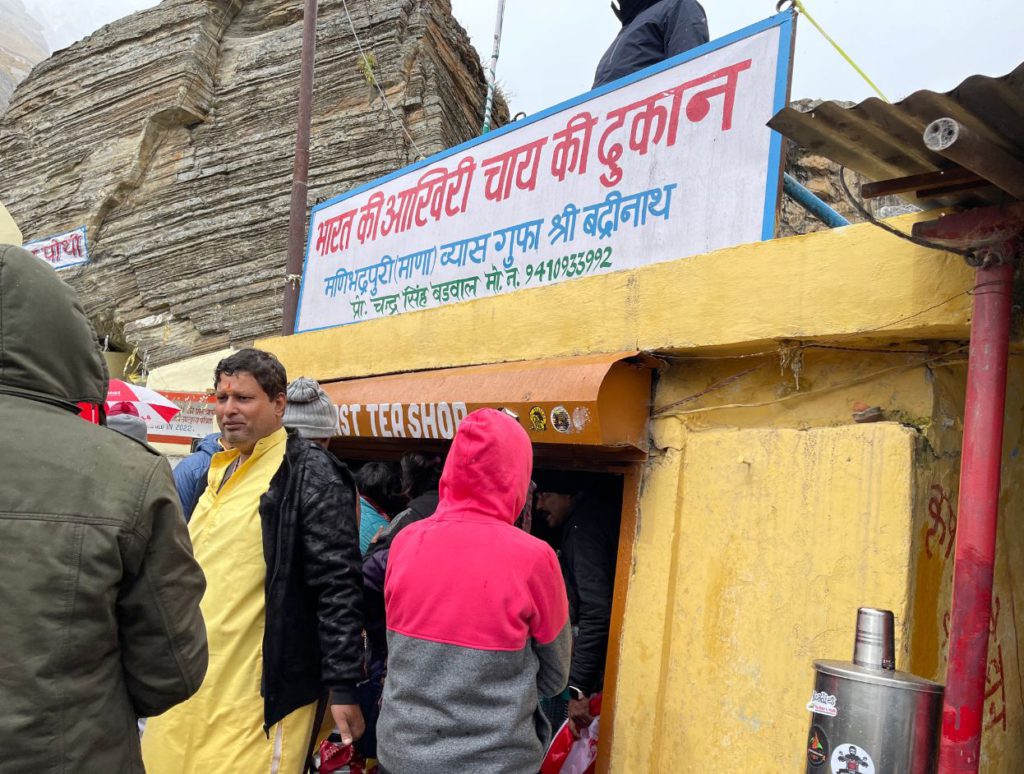
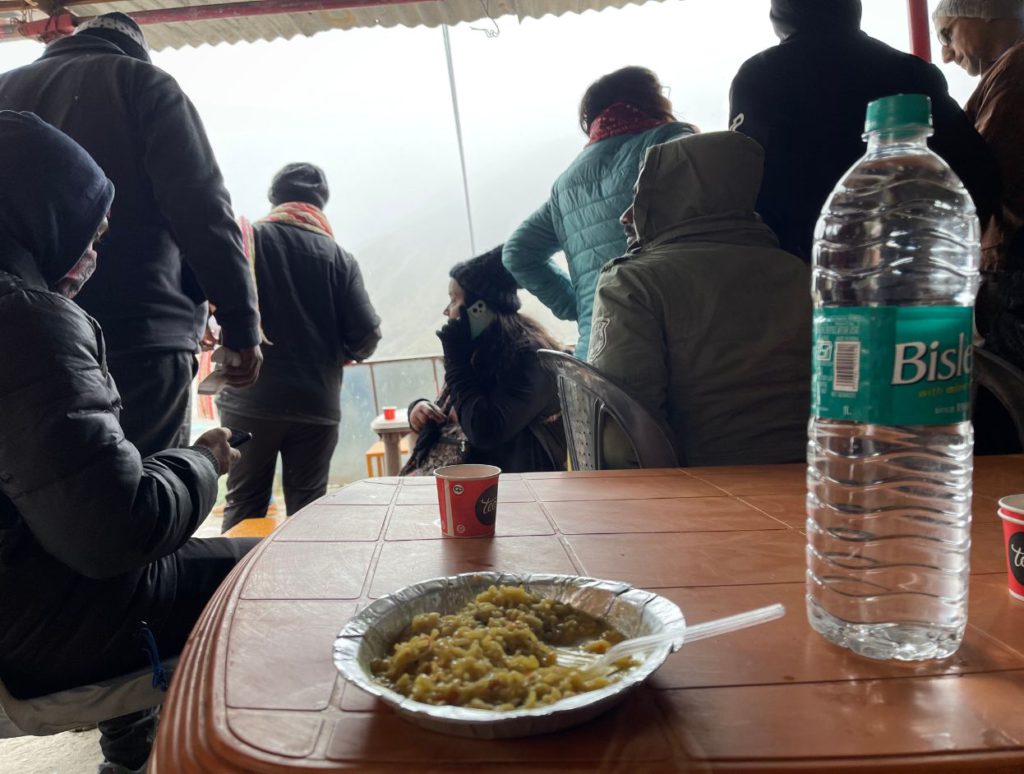
Best time to visit Mana Village
Mana village is open to tourists and pilgrims alike during the months of April – October, the same as the time of the opening of Badrinath shrine. During the winter months, the village is closed to all tourists and outsiders and most of the villages move to another village at a lower altitude since the cold climate makes this place inhabitable.
If you wish to catch some snow, April and October are the two months when you can get lucky. Avoid the months of July-August due to heavy rainfall. But other than that, it depends upon your time of visit to Badrinath or the surrounding areas.
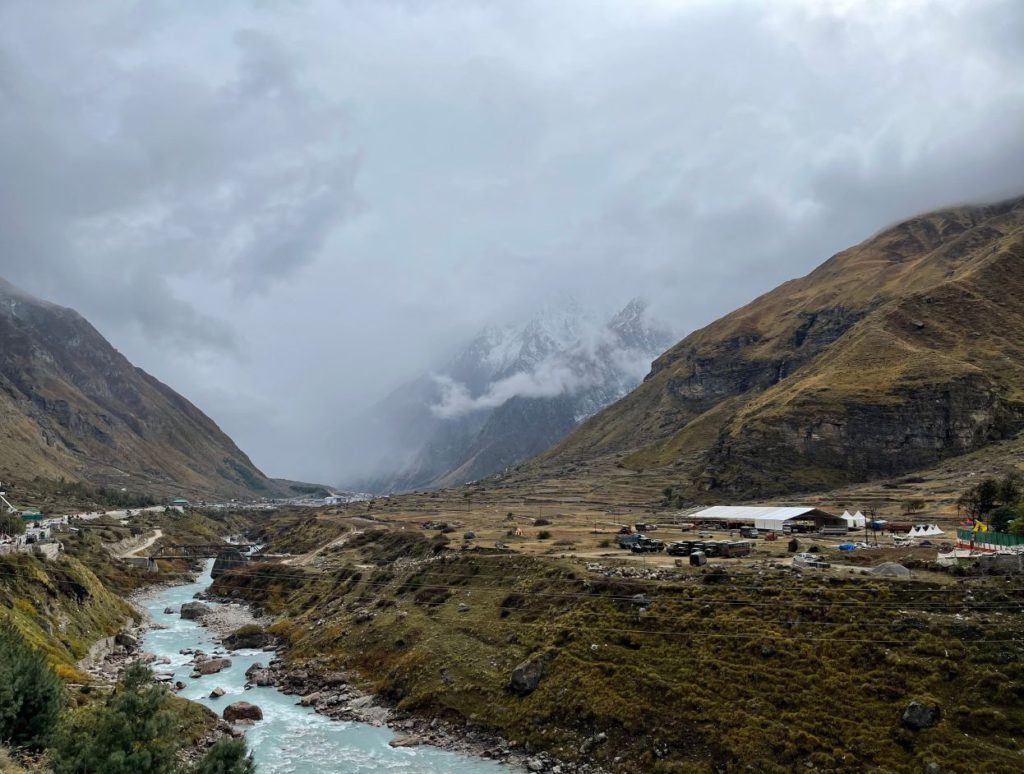
What else to find at Mana village
If you are here, check out the souvenirs that the locals make and sell in the several stalls inside the village. The ladies knit and weave shawls, scarves, sweaters, caps, gloves and other winter wear. Many of them are from sheep that are reared locally.
Mana is also popular for local potatoes and beans. Mountainous and local potatoes are smaller and taste different from regular potatoes. So find a sack in the town and see if you can try out some boiled potatoes on a cold winter day.
Visiting the Dhams? Check out all you need to know to visit Kedarnath Dham
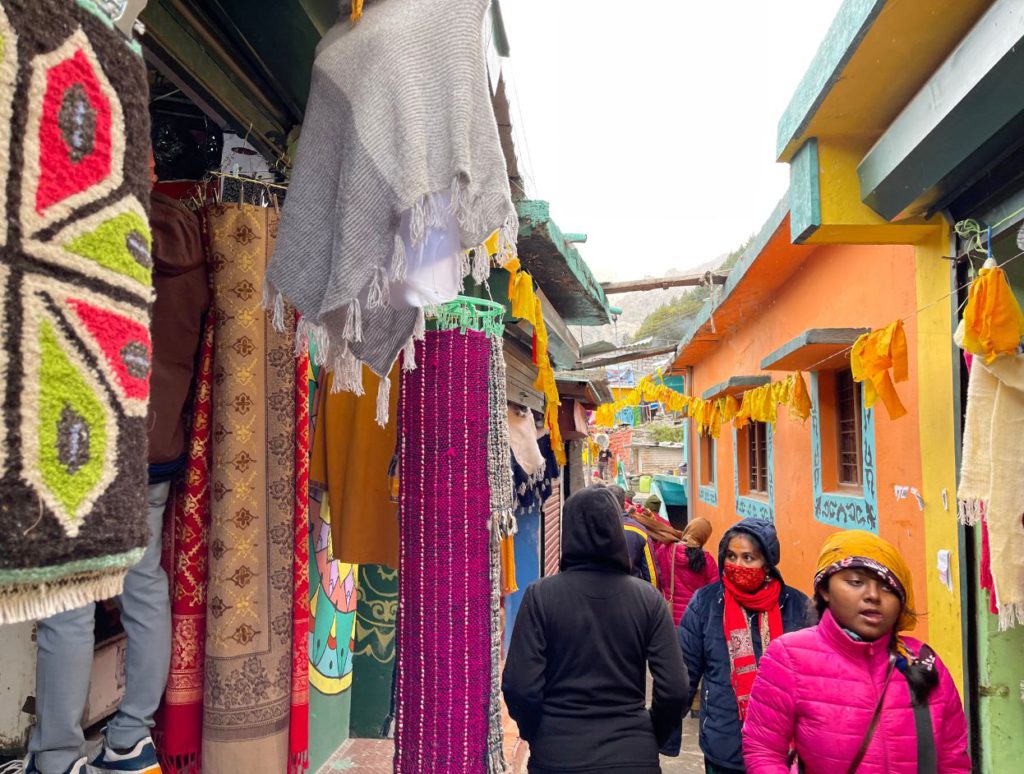






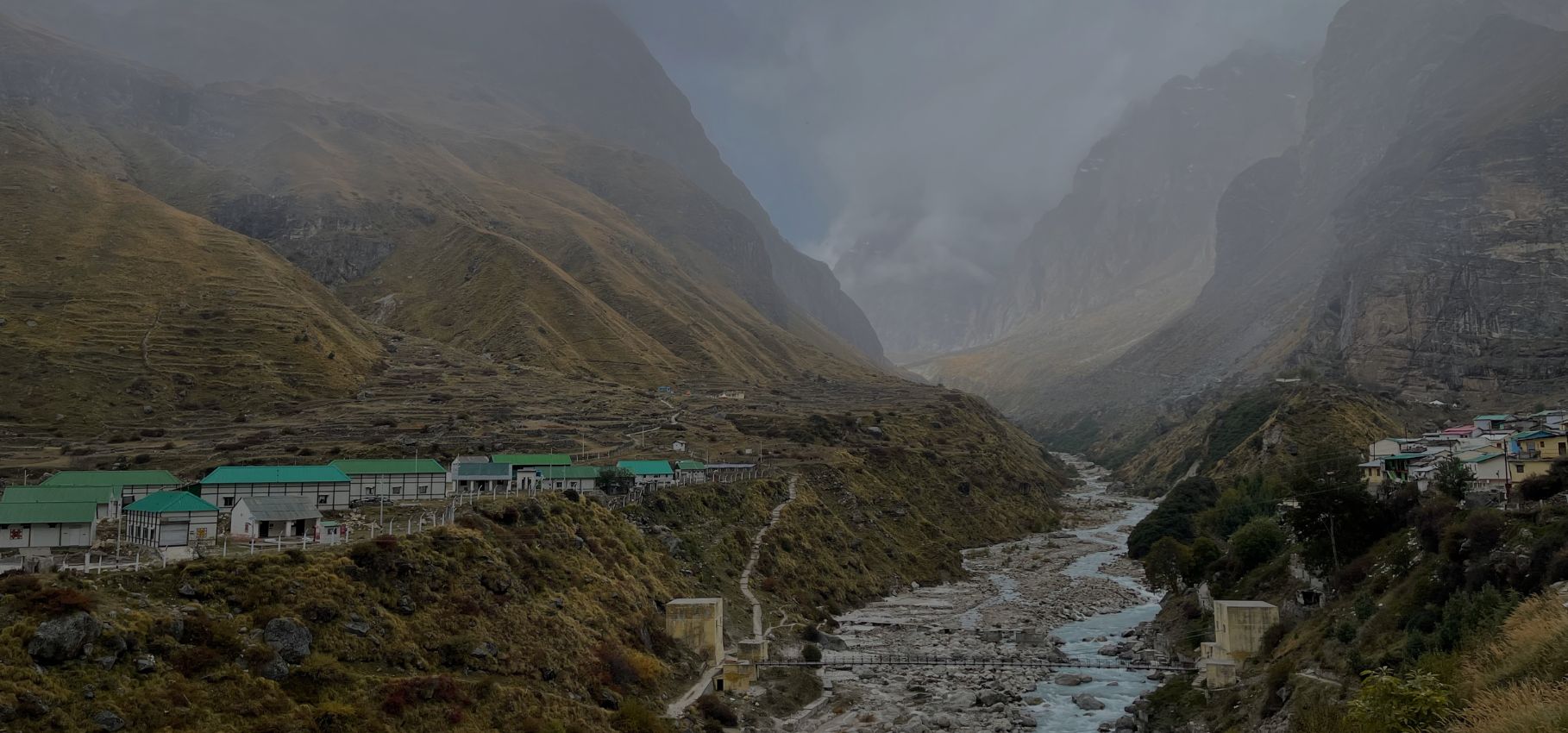
No Comments